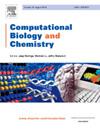Selectivity mechanism of inhibition towards Phosphodiesterase 1B and phosphodiesterase 10A in silico investigation
IF 2.6
4区 生物学
Q2 BIOLOGY
引用次数: 0
Abstract
Due to the unclear selectivity of the protein system, designing selective small molecule inhibitors has been a significant challenge. This issue is particularly prominent in the phosphodiesterases (PDEs) system. Phosphodiesterase 1B (PDE1B) and phosphodiesterase 10 A (PDE10A) are two closely related subtypes of PDE proteins that play diverse roles in the immune system and tumorigenesis, respectively. Distinguishing the selective mechanism of these two subtypes is crucial for maximizing therapeutic efficacy and minimizing the side effects of inhibitors. We have investigated the interactions between crucial amino acid residues and selective inhibitors through several computer-aided drug design methods such as molecular docking, molecular dynamic simulation, MM/GBSA calculation, and alanine scanning mutagenesis revealing the selective inhibition mechanism between PDE1B and PDE10A. Our finding shows the selective residues of PDE1B are His373 and Gln421, while the selective residues for PDE10A are Tyr683 and Phe719. Specifically, PDE10A inhibitors form hydrogen bonds and hydrophobic interactions with Tyr683 and Phe719, whereas PDE1B inhibitors only demonstrate weak hydrophobic interactions in the corresponding region. Overall, elucidating the selectivity mechanism underlying the differential interaction between PDE1B and PDE10A is crucial for designing inhibitors with distinct selectivity towards PDE1B/10 A.
磷酸二酯酶1B和磷酸二酯酶10A抑制的选择性机制研究。
由于蛋白质系统的选择性尚不清楚,设计选择性小分子抑制剂一直是一个重大挑战。这个问题在磷酸二酯酶(PDEs)系统中尤为突出。磷酸二酯酶1B (PDE1B)和磷酸二酯酶10 A (PDE10A)是两种密切相关的PDE蛋白亚型,分别在免疫系统和肿瘤发生中发挥不同的作用。区分这两种亚型的选择机制对于最大限度地提高治疗效果和减少抑制剂的副作用至关重要。我们通过分子对接、分子动力学模拟、MM/GBSA计算、丙氨酸扫描诱变等计算机辅助药物设计方法研究了关键氨基酸残基与选择性抑制剂之间的相互作用,揭示了PDE1B和PDE10A之间的选择性抑制机制。我们发现PDE1B的选择性残基是His373和Gln421,而PDE10A的选择性残基是Tyr683和Phe719。具体而言,PDE10A抑制剂与Tyr683和Phe719形成氢键和疏水相互作用,而PDE1B抑制剂仅在相应区域表现出弱疏水相互作用。总之,阐明PDE1B和PDE10A之间差异相互作用的选择性机制对于设计对PDE1B/10 A具有不同选择性的抑制剂至关重要。
本文章由计算机程序翻译,如有差异,请以英文原文为准。
求助全文
约1分钟内获得全文
求助全文
来源期刊

Computational Biology and Chemistry
生物-计算机:跨学科应用
CiteScore
6.10
自引率
3.20%
发文量
142
审稿时长
24 days
期刊介绍:
Computational Biology and Chemistry publishes original research papers and review articles in all areas of computational life sciences. High quality research contributions with a major computational component in the areas of nucleic acid and protein sequence research, molecular evolution, molecular genetics (functional genomics and proteomics), theory and practice of either biology-specific or chemical-biology-specific modeling, and structural biology of nucleic acids and proteins are particularly welcome. Exceptionally high quality research work in bioinformatics, systems biology, ecology, computational pharmacology, metabolism, biomedical engineering, epidemiology, and statistical genetics will also be considered.
Given their inherent uncertainty, protein modeling and molecular docking studies should be thoroughly validated. In the absence of experimental results for validation, the use of molecular dynamics simulations along with detailed free energy calculations, for example, should be used as complementary techniques to support the major conclusions. Submissions of premature modeling exercises without additional biological insights will not be considered.
Review articles will generally be commissioned by the editors and should not be submitted to the journal without explicit invitation. However prospective authors are welcome to send a brief (one to three pages) synopsis, which will be evaluated by the editors.
 求助内容:
求助内容: 应助结果提醒方式:
应助结果提醒方式:


